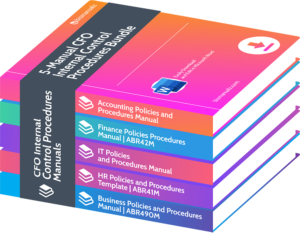What should a CFO Know about Financial Modeling Best Practices?

Are you a CFO looking to improve your financial modeling practices? Look no further. In today’s fast-paced business world, it’s crucial for CFOs to have a strong understanding of financial modeling and its best practices. This article will provide valuable insights and tips to help you navigate the complex world of financial modeling and excel at your role. What should a CFO know about financial modeling best practices?
What is Financial Modeling?
Financial modeling is the process of creating a mathematical representation of a company’s financial situation. It is a crucial tool for CFOs to understand and manage their organization’s financial performance.
This involves building models and using them to make projections and forecasts for decision-making purposes. These models can range from simple to complex, depending on the complexity of the company’s operations and goals.
They typically include historical data, assumptions, and variables to simulate different scenarios. By analyzing the outputs of these models, CFOs can gain insights into the financial health of their organizations and make informed strategic decisions.
A real-life example of the effectiveness of financial modeling is when a CFO used it to assess the potential impact of a major investment decision a few years ago. By building a comprehensive model that accounted for various factors such as market trends, competition, and financial projections, the CFO was able to evaluate the potential risks and rewards of the investment.
The model helped the CFO make an informed decision and provided valuable insights to the executive team. As a result, the company successfully executed the investment, leading to significant growth and profitability.
Why is Financial Modeling Important for CFOs?
Financial modeling plays a crucial role for CFOs as it allows them to make well-informed financial decisions, evaluate potential outcomes, and mitigate risks. By creating models that simulate various scenarios and incorporate different assumptions, CFOs can assess the financial impact of different strategies and make strategic decisions to drive the growth of the company.
Moreover, financial modeling assists CFOs in effectively communicating complex financial information to stakeholders, which is beneficial for fundraising, investor relations, and strategic planning. With accurate and reliable financial models, CFOs can improve forecasting accuracy, identify opportunities for cost savings, and optimize resource allocation.
Overall, financial modeling empowers CFOs to make sound financial decisions that are in line with the company’s goals and objectives.
Best Practices for Financial Modeling
As a CFO, having a strong understanding of financial modeling best practices is essential for making informed and strategic decisions. In this section, we will discuss the key elements of effective financial modeling and how they can benefit your organization.
From building a solid foundation to regularly reviewing and updating the model, we will cover the best practices that can help streamline your financial planning and analysis process. Let’s dive in and learn about the top tips for creating efficient and accurate financial models.
1. Start with a Solid Foundation
Creating financial models requires a solid foundation:
- Clearly define the purpose and scope of the model.
- Gather accurate and reliable data from various sources.
- Outline the structure and layout of the model.
- Establish clear and consistent assumptions.
- Use logical and transparent formulas and calculations.
- Include proper documentation for clarity and ease of understanding.
- Test and validate the model for accuracy and reliability.
By starting with a solid foundation, CFOs can ensure the effectiveness and credibility of their financial models.
2. Use Realistic Assumptions
Using realistic assumptions is crucial for creating accurate financial models. Here are the steps to follow:
- Gather relevant data and information.
- Analyze historical trends and patterns.
- Consider market conditions and industry benchmarks.
- Take into account potential risks and uncertainties.
- Use conservative estimates to avoid overestimating revenues or underestimating costs.
- Validate assumptions with industry experts or consultants.
- Regularly review and update assumptions as new information becomes available.
By using realistic assumptions, financial models can provide more reliable insights and help CFOs make informed decisions.
3. Keep it Simple and Understandable
Keeping financial modeling simple and understandable is crucial for effective decision-making. Here are some steps to achieve this:
- Organize the model structure logically and use clear labeling for inputs, assumptions, and outputs.
- Keep formulas and calculations concise, avoiding unnecessary complexity.
- Use plain language and avoid jargon or technical terms, ensuring easy comprehension for all stakeholders, including non-experts.
- Provide clear documentation and explanations for formulas, assumptions, and key drivers.
- Include summary tables and charts to present key findings and insights visually.
By following these steps, financial models become user-friendly, enabling better understanding and enhancing decision-making processes.
4. Regularly Review and Update the Model
Regularly reviewing and updating financial models is crucial to ensure accuracy and relevance. Here are the steps to follow:
- Establish a regular review schedule, such as monthly or quarterly, to ensure that the model is up-to-date.
- Verify data inputs and formulas to ensure correctness and make any necessary changes.
- Consider changes in the business environment, such as market conditions or regulations, and adjust the model accordingly.
- Update assumptions based on new information or developments to ensure the model reflects the most current data.
- Validate the model with experts and stakeholders for feedback and improvement to ensure its accuracy.
- Document any changes made to the model for future reference and transparency.
Common Mistakes to Avoid in Financial Modeling
When it comes to financial modeling, it is crucial for CFOs to have a thorough understanding of best practices in order to make informed and accurate decisions. However, even with the best intentions, there are common mistakes that can compromise the effectiveness of financial models.
In this section, we will discuss the most frequent mistakes to avoid when creating financial models, including ignoring historical data, relying on single-scenario models, not considering external factors, and not validating the model with industry experts. By being aware of these pitfalls, CFOs can ensure the reliability and usefulness of their financial models.
1. Ignoring Historical Data
Ignoring historical data when creating financial models can result in unreliable and incorrect results. To prevent this common error, follow these steps:
- Gather and evaluate historical financial data, including income statements, balance sheets, and cash flow statements.
- Analyze trends and patterns in the data to gain valuable insights into past performance and potential future outcomes.
- Utilize historical data as a foundation for developing assumptions and forecasting future scenarios.
- Validate the validity of your assumptions by comparing them to historical trends and industry benchmarks.
- Make necessary adjustments to your model to incorporate any significant changes or deviations from historical data.
By recognizing the significance of historical data and integrating it into your financial modeling process, you can make well-informed decisions and enhance the accuracy of your projections.
2. Relying on Single-Scenario Models
Relying solely on single-scenario models in financial modeling can be risky due to the inherent uncertainties in the business environment. To mitigate this, consider the following steps:
- Create multiple scenarios: Develop different scenarios based on various assumptions to capture a range of potential outcomes.
- Perform sensitivity analysis: Analyze how changes in key variables impact the model’s results across different scenarios, including the scenario of relying on single-scenario models.
- Incorporate downside scenarios: Include pessimistic scenarios to assess the impact of adverse events or market downturns.
- Consider external factors: Take into account economic conditions, industry trends, and regulatory changes that could impact the model.
Pro-tip: Instead of relying solely on single-scenario models, use a combination of scenario analysis and stress testing to gain a more comprehensive understanding of potential outcomes.
3. Not Considering External Factors
Ignoring external factors is a common mistake in financial modeling that can lead to inaccurate projections and decisions. To ensure a comprehensive and accurate financial model, consider the following steps:
- Research and identify relevant external factors, such as economic trends, industry regulations, and market dynamics.
- Gather reliable data and information on these external factors, using reputable sources and conducting thorough analysis.
- Incorporate the impact of these external factors into your financial model by adjusting assumptions, growth rates, and revenue projections accordingly.
- Continuously monitor and update the model as external factors change, ensuring that your projections remain realistic and aligned with the current business environment.
Remember, not considering external factors can result in flawed financial forecasts, hindering informed decision-making. By taking these factors into account, you can enhance the accuracy and effectiveness of your financial models.
4. Not Validating the Model with Experts
Validating financial models with experts is crucial to ensure accuracy and reliability. Neglecting this step can lead to flawed assumptions and incorrect conclusions. By involving experts, such as financial analysts or industry professionals, potential errors and biases can be identified and addressed.
Their expertise can help validate the model’s assumptions, calculations, and underlying logic, thereby enhancing the credibility and robustness of the financial model. This process instills greater confidence in the results for stakeholders.
Additionally, collaborating with experts allows for valuable insights and perspectives, ultimately improving the overall quality and effectiveness of the financial modeling process.
Tips for Creating Effective Financial Models
When it comes to financial modeling, there are certain best practices that every CFO should be aware of. These practices can help ensure the accuracy and effectiveness of financial models, which are crucial for making informed business decisions.
In this section, we will discuss three key tips for creating effective financial models: using sensitivity analysis, documenting assumptions and calculations, and utilizing visual aids to enhance understanding. By following these tips, CFOs can improve the quality and reliability of their financial models.
1. Use Sensitivity Analysis
Sensitivity analysis is an essential step in financial modeling, allowing CFOs to evaluate the effects of variable changes on the model’s output. To effectively utilize sensitivity analysis, CFOs should follow these steps:
- Identify the key variables that impact the model.
- Determine a range of values for each variable.
- Calculate the corresponding output for each value.
- Analyze the results to gain insights into the model’s sensitivity to changes in variables.
Fact: Utilizing sensitivity analysis helps CFOs understand the potential risks and uncertainties associated with their financial models, empowering them to make more informed decisions.
2. Document Assumptions and Calculations
Documenting assumptions and calculations is crucial in financial modeling. To ensure accurate and transparent documentation, follow these steps:
- Clearly label and organize assumptions: List all assumptions used in the model and provide a brief description for each.
- Include the source of assumptions: Specify where the assumptions were derived from, whether it be historical data, market research, or expert opinions.
- Document formulas and calculations: Clearly outline the formulas used and explain the logic behind them. This ensures transparency and makes it easier for others to understand and review the model.
- Implement version control: Keep track of any changes made to the assumptions or calculations and document the reasons for these changes. This helps maintain the integrity of the model.
- Regularly review and update documentation: As the model evolves, ensure that the documentation accurately reflects any changes or updates.
3. Use Visual Aids to Enhance Understanding
Using visual aids in financial modeling can greatly enhance understanding and communication. Here are some steps to effectively incorporate visual aids:
- Create clear and well-organized charts and graphs to visually represent financial data.
- Use color coding and labels to highlight key information and make it easier to interpret.
- Utilize charts such as bar graphs, line graphs, and pie charts to show trends, comparisons, and proportions.
- Include visuals like flowcharts or diagrams to illustrate complex financial processes or relationships.
Remember to keep the visuals simple, concise, and relevant to the information being conveyed. This will help stakeholders better grasp the financial model and make informed decisions.
Frequently Asked Questions

What should a CFO Know about Financial Modeling Best Practices?
As the chief financial officer of a company, you play a crucial role in overseeing the financial health and stability of your organization. Financial modeling is an essential tool for making informed business decisions, and it is thus essential for CFOs to have a thorough understanding of best practices in this area.
Why is understanding financial modeling best practices important for a CFO?
Financial modeling is used to forecast and analyze the financial performance of a company, and it is a critical tool for making strategic decisions. As a CFO, having a solid grasp of financial modeling best practices will enable you to make accurate and data-driven decisions that can have a significant impact on your company’s success.
What are some common financial modeling best practices that CFOs should be aware of?
Some of the key financial modeling best practices include using consistent and accurate data, considering multiple scenarios, testing and validating the model, and documenting assumptions and methodologies. Additionally, it is crucial to ensure that the model is easy to understand and update, and to seek input and feedback from relevant stakeholders.
How can a CFO stay updated on the latest financial modeling best practices?
The world of finance is constantly evolving, and it is essential for CFOs to stay updated on the latest financial modeling best practices. This can be achieved by attending industry conferences and workshops, networking with other finance professionals, and staying abreast of relevant publications and research in the field.
What are the potential risks of not following best practices in financial modeling?
Failing to follow best practices in financial modeling can lead to inaccurate or biased results, which can have significant consequences for a company’s financial stability and decision-making. It can also result in poor resource allocation and missed opportunities for growth and success.
Are there any tools or resources available to help CFOs improve their financial modeling best practices?
Yes, there are various software and online resources available that can assist CFOs in improving their financial modeling skills and practices. Some examples include financial modeling courses, data analysis tools, and industry-specific templates and guidelines. It is essential to research and find the most suitable resources for your company’s specific needs.
















Leave a Reply